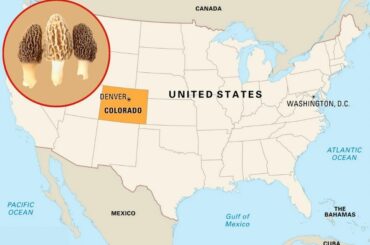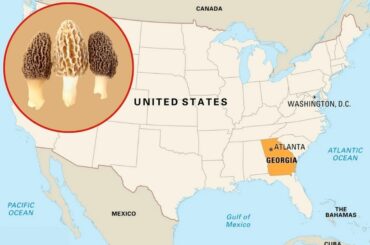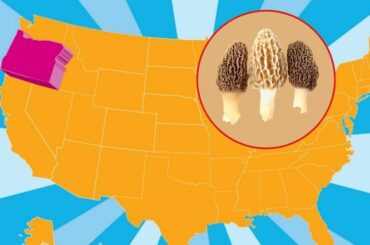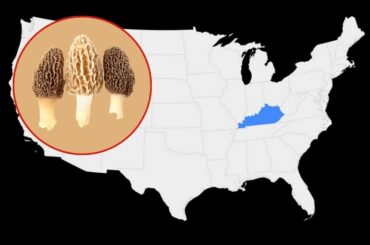Imagine stumbling upon a hidden treasure in the woods—a delicate mushroom with a honeycomb-like cap and a rich, earthy aroma. Morel mushrooms, with their distinctive appearance and exquisite flavor, captivate the hearts and taste buds of mushroom enthusiasts and gastronomes alike. But what about Texas? Do Morel Mushrooms Grow in Texas? Let’s delve into the enigmatic world of morel mushrooms and explore their presence in Texas.
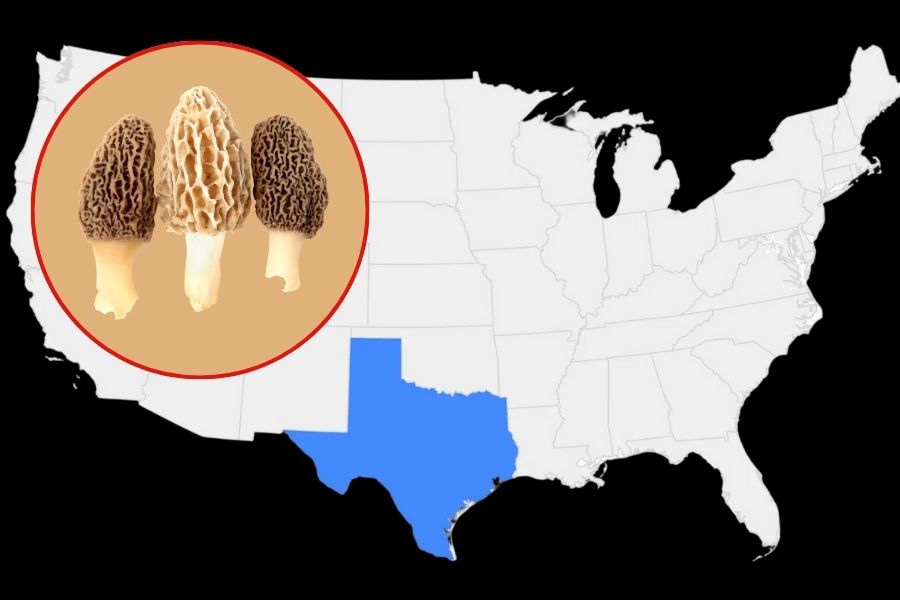
Do Morel Mushrooms Grow in Texas?
Contents
The growth of morel mushrooms in Texas is relatively limited due to the state’s climatic and soil conditions. While sporadic sightings have been reported, the overall abundance of morels is not comparable to regions with more suitable environments. However, Texas’s vast landscapes and diverse ecosystems provide ample opportunities for mushroom enthusiasts to explore and discover a wide range of edible fungi.
Morel Mushrooms in Different Regions
Morel mushrooms are known to thrive in various regions around the world. However, their presence can be highly variable, even within the same country or state. Factors such as climate, elevation, and soil characteristics play a significant role in determining their abundance.
Morels in Texas: A Closer Look
Texas, with its vast expanse and diverse ecosystems, offers a promising canvas for mushroom enthusiasts. While morel mushrooms are not as abundant in Texas compared to some other regions, there have been reports of their occasional findings. Let’s explore the factors that influence their growth in the Lone Star State.
Texas Climate and Soil Conditions
Texas boasts a diverse climate, ranging from humid subtropical in the east to arid in the west. The state experiences varying rainfall patterns, temperatures, and soil types across its different regions. These factors contribute to the challenges and opportunities for morel mushroom growth.
Suitable Habitats for Morels in Texas
In Texas, morel mushrooms are more likely to be found in areas with specific conditions. They tend to favor regions with moderate moisture, such as creek bottoms, riverbanks, and areas near deciduous trees. Oak forests and burned areas can also provide suitable habitats for morel growth.
Finding Morel Mushrooms in Texas
For those eager to embark on a morel mushroom foraging adventure in Texas, the key lies in knowing where and when to look. Patience and persistence are essential, as morels can be elusive even in areas where they have been spotted before. Exploring diverse habitats and keeping an eye out for signs of morel-friendly environments can increase the chances of finding these elusive mushrooms.
Tips for Morel Mushroom Foraging in Texas
- Timing is crucial: Morels tend to appear in Texas during the spring season, typically between March and May. Keep an eye on the weather patterns and soil temperatures to determine the optimal time for foraging.
- Seek out suitable habitats: Focus your search in areas with moist soil, such as creek banks, riverbeds, and areas near hardwood trees like oaks and ashes. Pay attention to recently burned areas as morels often thrive in these environments.
- Be observant: Train your eyes to spot the distinct features of morel mushrooms. Look for their cone-shaped caps, which can range in color from light tan to dark brown. Scan the forest floor, particularly around leaf litter and decaying matter.
- Go off the beaten path: Morels often grow in hidden or less-traveled areas. Explore remote locations or lesser-known trails to increase your chances of finding these elusive fungi.
- Be patient: Morel hunting requires patience and persistence. Remember that morels can be sporadic in their growth patterns. Even if you don’t find any on one outing, keep exploring different habitats and return to promising locations in subsequent years.
Safety Precautions
While the allure of morel mushroom foraging is undeniable, it’s crucial to prioritize safety. Consider the following precautions:
- Educate yourself: Study reliable resources, join local mycological societies, or consult experienced foragers to enhance your knowledge of morel mushrooms and their look-alikes.
- Accurate identification: Ensure proper identification before consuming any wild mushrooms. Mistakes can have severe consequences. If you’re unsure, consult an expert or err on the side of caution.
- Leave-no-trace: Practice responsible foraging by minimizing your impact on the environment. Only take what you intend to consume and avoid damaging the natural habitat.
- Avoid contaminated areas: Steer clear of areas where chemical pesticides or pollutants may be present. Foraging in organic and non-polluted locations is vital for your health and the well-being of the mushrooms.
Conclusion
While morel mushrooms may not grow as abundantly in Texas as in some other regions, they can still be discovered by those willing to explore suitable habitats and exercise patience. Remember to prioritize safety by accurately identifying mushrooms and following responsible foraging practices. Texas’s diverse ecosystems offer a fascinating opportunity to embark on a morel mushroom hunting adventure, connecting with nature and enjoying the delicious rewards it has to offer.
FAQs
1. Are morel mushrooms poisonous?
No, morel mushrooms are not poisonous. However, it’s crucial to exercise caution and accurately identify any wild mushrooms before consumption.
2. Can I cultivate morel mushrooms in my garden?
Cultivating morel mushrooms is notoriously challenging, as they have complex life cycles and specific habitat requirements. Efforts to cultivate morels commercially have had limited success.
3. Do morel mushrooms have any health benefits?
While morel mushrooms are appreciated for their unique taste, they also contain various nutrients, including vitamins, minerals, and antioxidants. However, their health benefits have not been extensively studied.
4. Can I freeze morel mushrooms for later use?
Yes, morel mushrooms can be frozen for later use. To freeze morels, clean them thoroughly, slice them if desired, and spread them in a single layer on a baking sheet. Place the sheet in the freezer until the mushrooms are frozen solid, and then transfer them to airtight containers or freezer bags. Properly stored, frozen morels can retain their flavor for several months.
5. Can I substitute morel mushrooms with other varieties in recipes?
While the unique flavor and texture of morels are difficult to replicate, you can experiment with other edible mushroom varieties like chanterelles, porcini, or shiitake as substitutes. Each mushroom brings its own distinct characteristics to a dish, adding depth and complexity.
Remember, the world of mushrooms is vast and fascinating. Exploring different varieties and learning about their unique qualities can open up a whole new realm of culinary possibilities.
As you venture into the enchanting world of morel mushroom hunting, tread lightly, keep your eyes peeled, and embrace the thrill of the search. While Texas may not be renowned for its abundant morel harvests, the occasional discovery of these elusive mushrooms is a testament to the beauty and diversity of nature. So grab your basket, don your walking shoes, and embark on a captivating journey through Texas’s forests and woodlands in search of the elusive morel mushrooms. Happy hunting!

